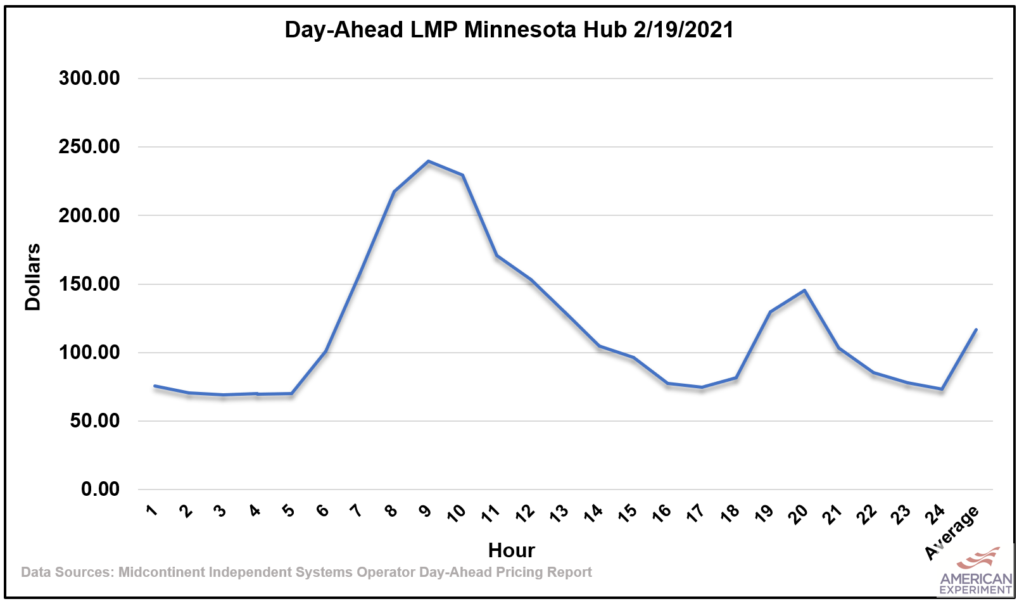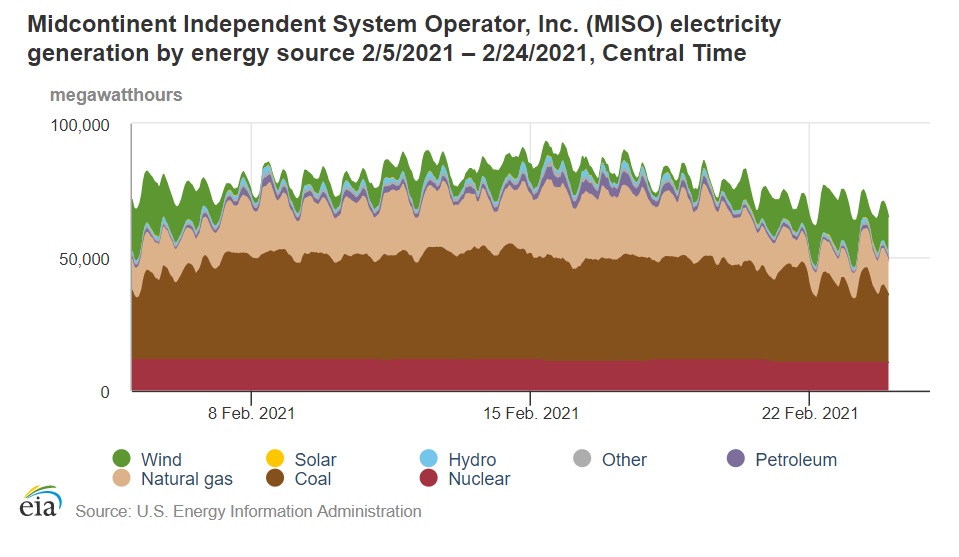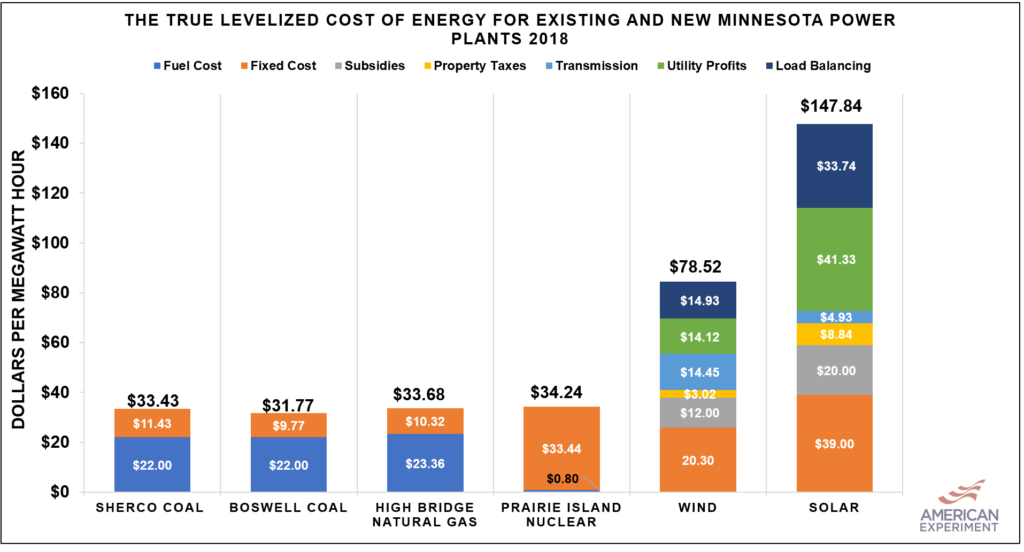North Dakota shouldn’t pay for Minnesota’s bad energy policy
Xcel Energy is currently attempting to force their electricity customers in North Dakota to help foot the bill for Minnesota’s bad energy policies and the government-approved monopoly’s predatory profit-seeking behavior. North Dakota regulators would be wise to reject this plot.
American Experiment recently revealed that Xcel Energy finally told the truth about the cost of solar, in North Dakota. In their official filing at the North Dakota Public Service (PSC) Commission, the company stated solar was not the lowest cost option, and as a result, it would not be asking North Dakotans to pay the full cost of the solar facility.
However, Xcel is still trying to stick North Dakota families and businesses with the bill by asking them to pay for the cost of a new natural gas power plant, even though the company is building solar panels.
American Experiment has submitted official comments to the North Dakota PSC explaining why we think this is a bad deal for North Dakotans, and why the Commission should not allow Xcel to force Peace Garden State residents to pay for misguided policies in Minnesota.
You can read our comments below.

Center of the American Experiment
8421 Wayzata Boulevard, Suite 110 | Golden Valley, MN 55426
Phone: 612-338-3605 | Fax: 612-338-3621 | Email: [email protected]
Prepared by Isaac Orr
In the matter of PU-21-152, the Application for Advance Determination of Prudence by Xcel Energy.
My name is Isaac Orr, and I am a policy fellow specializing in energy and environmental policy at Center of the American Experiment (American Experiment), a conservative, free-market think tank located in Minnesota.
I’m writing today to discuss how Xcel Energy’s application for an Advance Determination of Prudence (ADP) for its proposed 460 megawatts (MW) of grid-scale solar photovoltaic (PV) capacity at the Company’s Sherburne County (Sherco) Generating Station would force North Dakotans to unfairly subsidize Minnesota’s poor public policy decisions.
Xcel begins its ADP by explaining that the company is seeking to add the Sherco Solar resource to fill a capacity need that is expected to arise on its system in 2026. However, the company will only have a capacity shortage because it is seeking to prematurely retire Unit 1 and Unit 2 of the Sherburne County coal-fired generating station in Becker, Minnesota, before the end of their useful lifetimes.
These reliable, resilient, and affordable coal plants are being closed on an accelerated timeline and replaced with an expensive and less-reliable combination of wind, solar, and natural gas power plants to meet Minnesota’s misguided energy policy priorities and to meet Xcel’s internal company carbon dioxide reduction and earnings goals. North Dakota ratepayers should not subsidize these bad decisions.
Xcel Energy is correct in its statement that the solar facility is only being installed due to Minnesota policy choices, and the company deserves credit for acknowledging this in its filing. However, the company’s proposed compromise for North Dakota ratepayers leaves much to be desired.
The company explains that instead of asking to recover the full cost of the solar installation, it will instead ask North Dakotans to pay for a 374 MW natural gas combustion turbine for capacity and pay the day-ahead Locational Marginal Price (LMP) at the Sherco solar facility for the energy consumed in North Dakota.
This is problematic because it is asking North Dakotans to pay the price for a dispatchable energy resource while failing to provide the hedge on energy prices that a dispatchable energy source would provide. Requiring North Dakota customers to pay day-ahead LMP prices leaves them vulnerable to soaring electricity prices, like those seen during the polar vortex of 2021.
The graph below displays day-ahead electricity prices from the Midcontinent Independent Systems Operator Day-Ahead Price Report at the Minnesota Hub on February 19, 2021.[1]

Prices spiked to $240 per megawatt-hour (MWh) at 9 am due to high natural gas prices and low output from unreliable wind and solar resources. As the grid continues to rely on natural gas and unreliable electricity sources, these price spikes could become much more significant.
The graph below uses U.S. Energy Information Administration Data to show electricity generation by source for the dates between February 5, 2021 and February 24, 2021.[2]

As you can see, there was little generation from intermittent resources when electricity was needed most. Coal, on the other hand, was the backbone of the regional grid during this time of extreme stress, serving to keep the lights on at the lowest possible cost.
According to Federal Energy Regulatory Commission (FERC) data, the Sherburne County generating station produced electricity for $33.43 per MWh, as you can see in the graph produced by American Experiment below. This made Sherco one of the lowest-cost power plants in the state during 2018.

FERC data show the cost of coal accounted for approximately $22/MWh of electricity generated at Sherburne County, with the remaining $11.43 cents spent on fixed costs. Fixed costs at the facility are low because much of the plant is depreciated, resulting in a very low cost for capacity.
The premature retirement of this facility has important implications for North Dakota ratepayers, who would be forced to pay for the cost of a new combustion turbine gas plant for capacity and be subject to the risk of paying high LMP costs at the solar facility for energy.
Because LMP prices are often set by the price of natural gas, Xcel’s plan would inflict multiple wounds on North Dakota ratepayers to achieve Minnesota policy goals.
- Retiring Sherco Units 1 and 2 removes a significant amount of low-cost dispatchable capacity, which was crucial to maintaining reliability and keeping LMP prices lower than they would have been in the absence of these two plants.
- Replacing coal units with solar will put more strain on the price of natural gas, leading to higher LMP costs in the future.
- As a result, North Dakota ratepayers would be forced to assume the risks of higher LMP prices in the future that may materialize in MISO as other utilities close down their coal-fired baseload plants.
North Dakota ratepayers have paid off most of the capital cost for the Sherco units, and they deserve to reap the dividends of their investments by receiving reliable, resilient, low-cost electricity from Xcel Energy. Therefore, it is most prudent for the Commission to deny Xcel’s ADP because it forces North Dakotans to pay for Minnesota’s misguided policies.
Rather than approving cost recovery for a gas plant, the PSC should allow Xcel to recover the costs that are in line with the costs associated with continuing to run Sherco Units 1 and 2 through 2034 and allow Xcel to seek cost recovery for the balance from Minnesota customers.
There is precedent for this course of action at the Minnesota Public Utilities Commission, where Otter Tail Power Co was allowed to recover the costs for a 50 MW solar facility exclusively through its Minnesota ratepayers.
North Dakota wisely seeks to keep the grid as reliable as possible for the lowest possible costs. Allowing Xcel Energy to recover these costs now would be incentivizing them to take actions that are not prudent under North Dakota law. Minnesota is free to make its own mistakes, but North Dakotans should not pay for them too.
I would be happy to discuss this subject in greater detail with you if you are interested.
Sincerely,
Isaac Orr
Policy Fellow
Center of the American Experiment
[1] https://docs.misoenergy.org/marketreports/20210219_da_pr.xls
[2] https://www.eia.gov/electricity/gridmonitor/expanded-view/electric_overview/balancing_authority/MISO/GenerationByEnergySource-14/edit